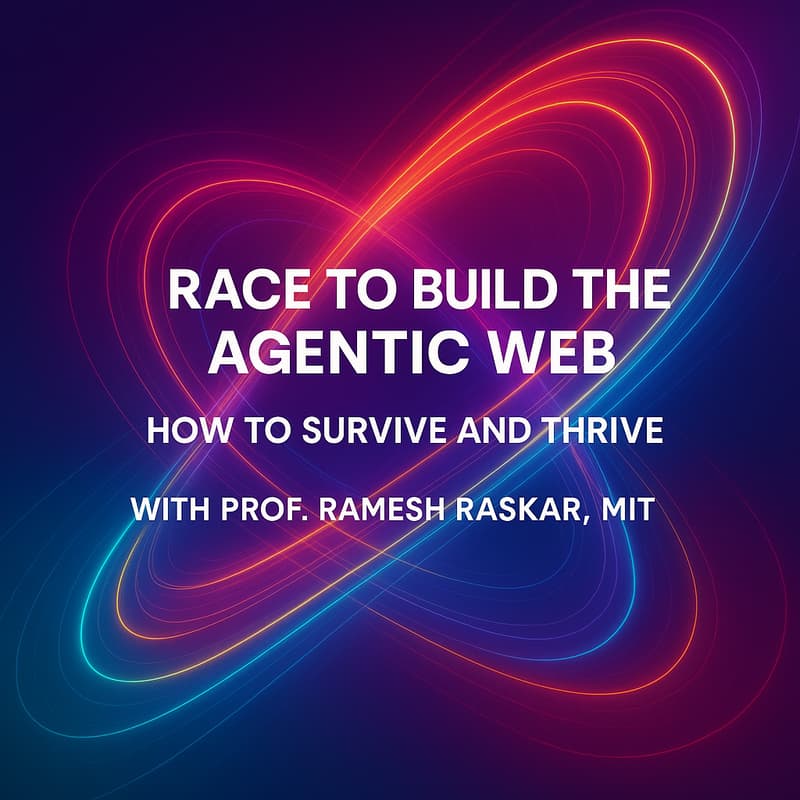

Race to Build the Agentic Web: How to Survive and Thrive - with Prof. Ramesh Raskar, MIT
The Agentic Web encompasses a sweeping evolution of web infrastructure and interaction, defined by the emergence of autonomous AI agents that can interpret, act upon, and transact across digital environments with minimal human oversight.
These agents bring forth capabilities that fundamentally reshape how information, applications, and economic activity are structured and experienced online.
Speakers
Prof. Ramesh Raskar (MIT) — Featured
Sam Sharaf (Sr. Director, Salesforce) — Special Guest
Join Prof. Ramesh Raskar (MIT), Sam Sharaf (Salesforce) and the NANDA team for an interactive discussion exploring the future of the Agentic Web.
1) Interop & Protocols (de-risk fragmentation)
Payments & Commerce rails: Open standards to let agents transact safely across cards, bank rails, and crypto. e.g., AP2 (Agent Payments Protocol) and ACP (Agentic Commerce Protocol) - aimed at consistent authorization, compliance, and merchant integration.
Agent-to-Agent messaging: Early blueprints (e.g., A2A, MCP) to let heterogeneous agents exchange intents and coordinate across enterprise estates.
Web-native agent standards: W3C AI Agent Protocol community work (use cases, discovery, description, transactions) shaping a standards roadmap for the Agentic Web.
2) Browser-native Agents (beyond APIs)
Computer-Use agents that operate UIs like humans—navigating, clicking, form-filling—expanding automation to services without clean APIs. Google’s Gemini 2.5 Computer Use is a notable line-leader; agentic browsers like Opera Neon push this into everyday workflows.
3) Security, Identity, & Trust (human-in-the-loop by default)
Credential safety for UI-driven agents: Solutions such as 1Password’s Secure Agentic Autofill route secrets through E2E channels with explicit user approval, reducing model exposure risk. Expect this pattern to become table stakes for enterprise rollouts.
4) Agentic DevEx (from “vibe coding” to ADEs)
Agentic Development Environments (ADEs): New IDEs let engineers delegate tasks to agents and intervene deterministically (task plans, diffs, guardrails). Warp’s ADE is emblematic of this shift.
5) Enterprise Guidance & Benchmarks (operating models)
What’s actually working: Stronger reasoning, browser-use agents, deep-research patterns, and agentic benchmarks are driving real productivity gains; analyst and VC briefs stress interoperability as the control point.
Governance frameworks: Reference guides from incumbents (e.g., IBM) emphasize agent lifecycle, policy guardrails, and auditability as prerequisites for production.
6) Infra Economics (design for throughput, cost, energy)
Operators are reframing SLAs around end-to-end assurance, data quality, and resilience, not just latency. The stack is being optimized across tok/$, tok/s, and tok/J to keep autonomous workflows economically viable.
Whether you’re a researcher, developer, founder, or investor, take part in opportunities to help shape the next era of distributed intelligence.
This isn’t about speculation. It’s about building the rails for the Internet of AI Agents - a future where commerce becomes continuous, transparent, and self-governing.
Hosted by Project NANDA - SF Bay Area Chapter, this event brings together researchers, founders, and builders to explore the emerging landscape of Agentic Web— where autonomous AI agents transact, negotiate, and collaborate across digital economies.
About NANDA
The NANDA Project is pioneering the foundational infrastructure for the Internet of AI Agents — enabling autonomous systems to interact, transact, and collaborate seamlessly.
↗ Homepage
↗ GitHub